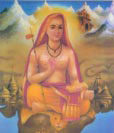  SPIRITUAL INDIA SPIRITUAL INDIAHIMALAYAN PILGRIMAGE (19 days or 24 days) Trek in the Timeless Himalayas, Experience the Source of the Ganges River. |
  SPIRITUAL INDIA SPIRITUAL INDIAHIMALAYAN PILGRIMAGE (19 days or 24 days) Trek in the Timeless Himalayas, Experience the Source of the Ganges River. |
| The Sacred Himalayan Mountains |

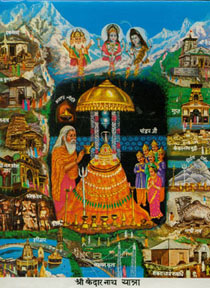 Do you now want to experience the awesome high
Himalayan mountains, the most sacred shrines of India, and the holy
men and women who live in Himalayan caves? Because on our amazing
Himalayan Pilgrimage, we will have that rare opportunity in an
awesome once-in-a-lifetime experience.
Do you now want to experience the awesome high
Himalayan mountains, the most sacred shrines of India, and the holy
men and women who live in Himalayan caves? Because on our amazing
Himalayan Pilgrimage, we will have that rare opportunity in an
awesome once-in-a-lifetime experience.
The four most
revered Hindu temples are in the Garhwal region of the Himalayas.
The temples of Shiva and Vishnu at Kedarnath and Badrinath have
been the destination of pilgrims for centuries--once reached after
tortuous treks, they are now easily accessible by road. Pilgrims
from all over the world have braved severe conditions of landscape
and weather to visit the shrines and have the holy sight of the
revered dieties. At Uttarkashi at a height of over 3000 meters, the
snow melts to form the sacred rivers of Ganges and Yamuna in a deep
recess of the mountains.
The route to the source of the two holy rivers begins
at Rishikesh and passes ancient temples and Valleys
along the way. The Shrines are only open from May to
November. During the severe winter season, the towns
close and everyone moves down the slopes. In the
hinterlands of the Himalayas is the town of
Gangotri where, it is believed, Mother Ganga, the stream of
life, came down from heaven and touched the Earth for the first
time.
| The Legendary Ganges River |
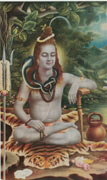 According to the Hindu religious scriptures,
the heavenly goddess Ganga manifested herself in the form of a
river to absolve the sins of King Sagar's sons. In Gangotri
the river is called Bhagirathi, or the river brought down to the
earth from the heavens by Bhagirath - a descendant of Sagar - the
king who prayed and did severe penance for the salvation of his
60,000 ancestors. The river forms the Gauri Kund. This is where,
according to legend, it descended
According to the Hindu religious scriptures,
the heavenly goddess Ganga manifested herself in the form of a
river to absolve the sins of King Sagar's sons. In Gangotri
the river is called Bhagirathi, or the river brought down to the
earth from the heavens by Bhagirath - a descendant of Sagar - the
king who prayed and did severe penance for the salvation of his
60,000 ancestors. The river forms the Gauri Kund. This is where,
according to legend, it descended 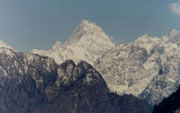 after leaping from the heavens into the
matted hair of the Yogi Lord Shiva, who saved the earth from floods
by taking the force of the powerful Ganges river into his
hair.
after leaping from the heavens into the
matted hair of the Yogi Lord Shiva, who saved the earth from floods
by taking the force of the powerful Ganges river into his
hair.
For the Hindus, the Ganga is the mother river which manifested from her celestial home onto the earth for the welfare of mankind. Its timeless flow of sacred water has shaped the devotion of millions and sustained huge populations in the subcontinent of India. Ganga water is holy and is used for purifying every Hindu home. The name of this eternal river symbolizes the very nerve centre of India's ancient culture. This river of life has nourished India's multi-faceted civilization and its growth since time immemorial.
|
and to the Source of the Ganges |
 Susan Shumsky of Divine Travels is a member of Travel Service Network, Inc. (TSN). Professional industry affiliations include:      
|
 Fly
overnight to India, arriving in the late evening. Your tour leader
will accompany you to your hotel in the heart of Delhi, followed by
the Traditional Indian Welcome at the hotel. Overnight at
hotel. Fly
overnight to India, arriving in the late evening. Your tour leader
will accompany you to your hotel in the heart of Delhi, followed by
the Traditional Indian Welcome at the hotel. Overnight at
hotel.Hotel: The Oberoi Maidens or Similar
|
||
|
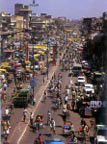 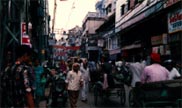 Meet
your group over the late breakfast, then enjoy a walking tour of
Old Delhi, featuring Raj Ghat, where Mahatma Gandhi was cremated.
Next, a cycle rickshaw carries us through the crowded Chandni Chowk
Bazaar to Jama Masjid, India's largest mosque. In the afternoon,
drive through New Delhi to visit the India Gate and the old
residences of British Viceroys. Meet
your group over the late breakfast, then enjoy a walking tour of
Old Delhi, featuring Raj Ghat, where Mahatma Gandhi was cremated.
Next, a cycle rickshaw carries us through the crowded Chandni Chowk
Bazaar to Jama Masjid, India's largest mosque. In the afternoon,
drive through New Delhi to visit the India Gate and the old
residences of British Viceroys.
Visit the
powerful, majestic Hindu Temples of Delhi: Chattarpur Temple,
Yogmaya Temple & Lakshmi Narayan Temple. 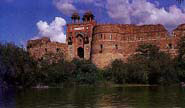 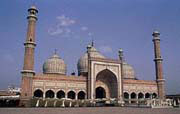 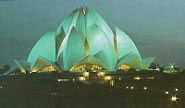
New Delhi: The new capital designed by Sir Edward Lutyens. An interesting drive in the one passing through the impressive Rajpath from the World War I memorial arch, the India Gate towards the Presidential Palace. Visit Humayun's Tomb built in 1565 AD, Safdarjung's Tomb, the Qutab Minar, 72 meters high and the most curious antique, the uncorroded Iron Pillar, which dates back to the 4th century AD. |
|||
|
 After breakfast,
leave for Rishikesh by surface, en route visiting Haridwar. At
Haridwar explore Evening Ganga - Aarti at Holy River Ganges at Har
Ki Pauri. Afterwards, continue to Rishikesh. Transfer to hotel.
Dinner & overnight at hotel. 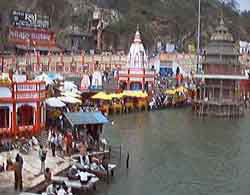  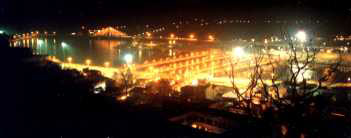 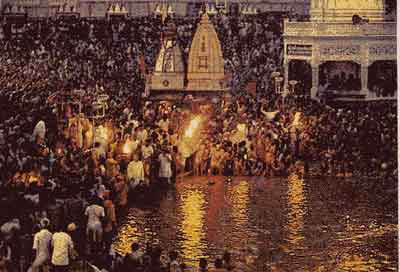 |
|||
|
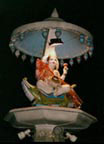 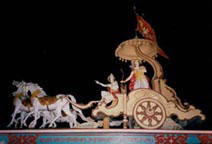 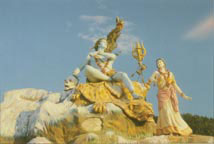 |
|||
|
After breakfast,
leave for Rudraprayag by surface. Reach Rudraprayag in the evening
and transfer to hotel. Dinner & overnight at hotel.
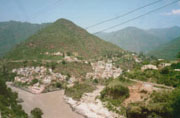
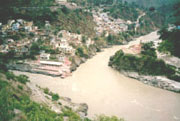 |
|||
|
Uttarkashi is is
the gateway to the pilgrim route to Gangotri. The beautiful small
town is situated on the right bank of the Bhagirathi, surrounded by
the rivers Varuna and Assi, at an altitude of about 1,550 m. As the
name suggests, Uttarkashi is considered the northern Kashi or
Varanasi, a historical pilgrimage city in the Indian plains. The
temples and ghats in Uttarkashi have names almost identical to
those in Varanasi, such as the Shiva temple--Vishwanath Mandir,
where stands a magnificent Trishul (trident), one meter in
circumference At one time, there were 365 temples in this town. It is known for its temples dedicated to Rishi Parasurama, Dattatreya, Goddess Annapurna Devi, Goddess Kali, and Bhairon. Among the other temples in this town filled with splendor are the temples of Parashuram, Kali and that of the Ekadash Rudra, built by the former Maharaja of Jaipur. The town is also known for its various ashrams, which are the homes of sanyasis and mendicants who occupy the banks of the holy river for penance and prayers. 

  Uttarkashi is also known as Barahat, literally meaning "a big market place". It is a town with modern facilities. The Nehru Institute of Mountaineering is located here. This national institute imparts mountaineering training to young people to inculcate the spirit of adventure among the youth of the country. The region has some high-altitude lakes and the Gangotri and Yamunotri glaciers lead on to several major peaks-the hunting grounds for serious mountaineering buffs. 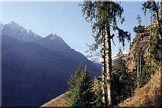 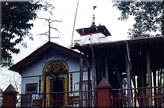
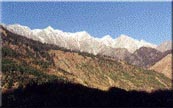 |
||
|
When Ganga descended from heaven, the current was so strong that Lord Shiva (the Destroyer in the Hindi Holy Trinity of Creator-Preserver-Destroyer) had to hold her flow in check by coiling his matted locks around her. From then on, Shiva is also known as Jatashankar (Jata means hair in Hindi). There is a lingam (the symbolic phallus of Shiva) submerged in the river that can be seen in winter, a natural rock shivling where according to mythology Lord Shiva sat when he received the Goddess Ganga in his matted locks. |
|||
|
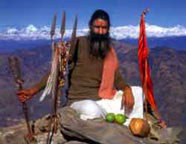 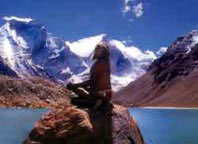 |
|||
|
|
||
|
   |
|||
|
After breakfast,
leave for Gauri kund (10 Km) by surface. Reach Gauri kund and trek
towards Kedarnath--14 Km/06 Hrs. (You can ride a pony or be carried
in a pallanquin if you do not want to trek.) Reach Kedarnath in the
evening. Dinner & overnight at hotel. 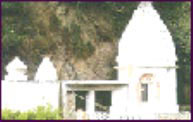 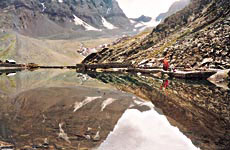  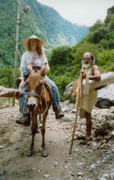 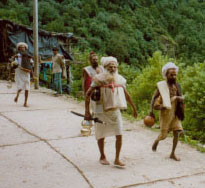
Gauri kund is a
plain area with a natural lake. There is an ancient temple,
dedicated to the Goddess Gauri or Parvati, which houses metallic
idols of Gauri and Shiva. According to legend, Parvati meditated
Near the temple there are two tanks of water, one has cold water, while the other is a hot water tank.The hot water comes out of a sulphur rock and and some of it falls into the River Mandakini, flowing nearby. The legend is that the consort of Lord Shiva, Parvati, takes bath here. Only women are allowed to take bath at Gauri Kund to seek the blessings of the goddess. Gauri kund is one kilometre below the sacred Mani Mahesh Lake, where Mount Kailash can be seen, but it usually remains covered with clouds. |
|||
|
Situated on the banks of the Mandakini River, at an altitude of of 3,581m, Kedarnath is a 14 km trek from Gauri kund. Kedarnath is one of the four main Hindu pilgrim centres in Uttarakhand (Himalayan Uttara Pradesh). Though mainly famous as a religious centre, this place, surrounded by mountain ranges, also attracts tourists because of its beautiful landscape.
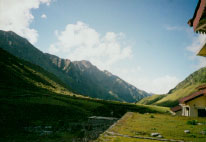 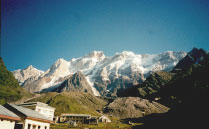

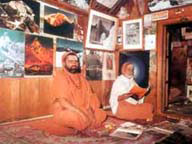 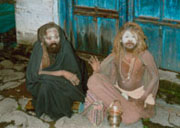
The jyotirlinga ("phallus of light") in this temple is one of the twelve jyotirlingas throughout India, which makes Kedarnath one of the most sacred Hindu cities. The difference between a jyotirlinga and an ordinary linga is that while the former derives power from within itself, the latter is invested with mantra-shakti (the power of a verse or phrase that has magical properties) by priests. 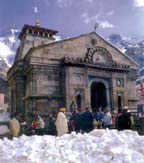 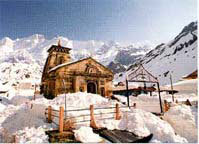
|
|||
|
After breakfast,
trek back to Gaurikund (14 Km/04 Hrs) and then continue to
Rudraprayag (78 Km) by surface. Reach Rudraprayag in the late
evening. Transfer to hotel Dinner & overnight at hotel. 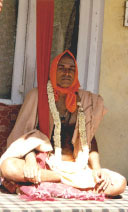 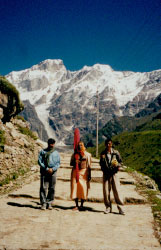 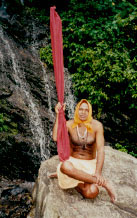 |
|||
|
|
After breakfast,
leave for Joshimath by surface. Reach Joshimath and transfer to
hotel. Dinner & overnight at hotel. Overnight: Hotel
Dronagiri Or GMVN Guest House (Meals: Breakfast & Dinner)
It is believed that Adi Shankara attained enlightenment at Jyotir Math under an ancient tree that still stands to this day. There is a small Shiva temple under this tree, commemorating this event. Also a small cave below the temple was thought to be used by Shankara to meditate. 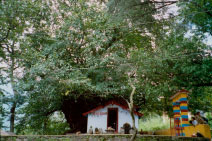 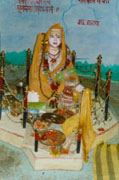 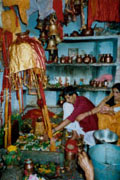
Visiting the ashram of Swami Vasudevanda is like sitting in the forest with the rishis of ancient India. The vibrations emanating from this holy spot fill the mind with peace and sanctity. The illustrious saint, Swami Brahmananda Saraswati Maharaj (guru of the famous Maharishi Mahesh Yogi who was Beatles' guru) lived in this monastary and held the post of Shankaracharya of Jyotir Math from 1941 to 1953--a post that had been vacant for over 150 years. 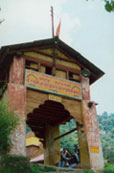 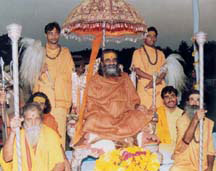  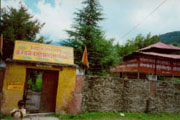 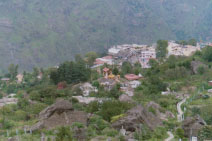 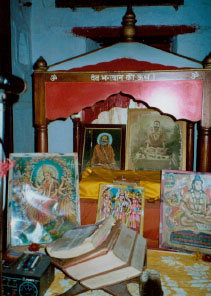 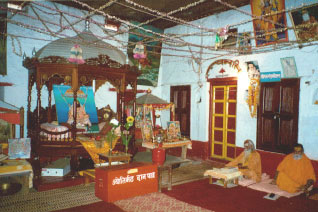
Under Swaroopananda's ashram is the cave of Trotakacharya, who was Adi Shankaracharya's favorite disciple. Trotaka, representative of purity, guilelessness, and innocence, was the founder of the Jyotir Math monastery. Each of Adi Shankara's disciples was the founder of one of the four monasteries set up by Adi Shankara in each of the four directions. These four monasteries have had a Shankaracharya at their head ever since that time. These four religious leaders are in charge of the spiritual well-being of all the people of that area. 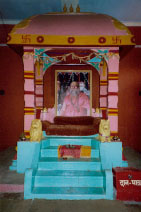 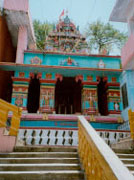 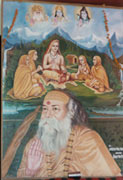
When the Badrinath Temple is closed in winter, devotees throng to worship at the Narsimha Temple at Joshimath. The temple is about 1200 years old. Dedicated to Vishnu, the presiding deity of the temple is Narsimha, the half-man, half-lion and fourth incarnation of Vishnu. The characteristic feature of the deity is that its left wrist is very thin and is getting thinner by the day. Situated some 30 yards from the Narsimha Temple, the Vasudeva Temple is one of the most famous Vishnu temples in India. It was considered very sacred by the Tamil vaishnavite saints known as alvars (see History of Kerala). The presiding deity of the temple is Vasudeva who is identified with Vishnu. The idol is carved out of a piece of black stone measuring 6 feet in height. |
||
|
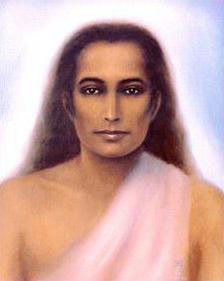 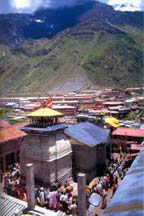 After breakfast, leave for
Badrinath, 42 km away. Evening aarti at the holy shrine. Transfer
to hotel. Dinner & overnight at hotel. After breakfast, leave for
Badrinath, 42 km away. Evening aarti at the holy shrine. Transfer
to hotel. Dinner & overnight at hotel.Hotel: Narayan Palace or similar (Meals Breakfast & Dinner) Above Joshimath, the army takes over the road, and there is an interesting one-way system. The traffic from Joshimath travels for a few hours to reach a place called Pandukeshwar, where the road is broader. Here the vehicles wait, while the traffic from Badrinath comes down and passes them. After that, the vehicles are allowed to move higher up the mountain. The ride further from here can be described as thrilling. The roads are well- maintained although very narrow. The area is extremely vulnerable to landslides and it is not uncommon to be stopped for a few hours or at worst a few days because of landslides due to heavy rain. As the narrow road winds steeply up the mountain, one encounters sharp hairpin bends which can be exciting or scary, depending on one's sense of adventure! 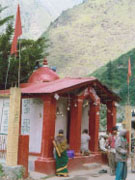  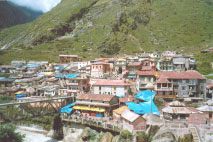
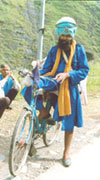
The temple stands
at the base of the mighty greater Himalayan wall that includes the
Nar, Narayana and Neelkanth peaks. The sacred Alaknanda River and
the Rishi Ganga stream Legend has it that Lord Vishnu came to the area to meditate after the sage Narada rebuked the Lord for being immersed in worldly pleasures. Lord Vishnu sent His consort Goddess Lakshmi (the Goddess of Wealth) to Naaglok (the celestial Snake God's land beneath the sea) and chose this valley, then called Badri Van, or the berry garden, to meditate.
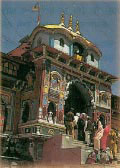 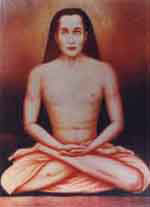 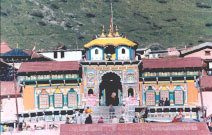 |
|||
|
After breakfast, leave for Auli by bus or car. Reach Auli and transfer to hotel. Dinner & overnight at hotel. Hotel: Cliff Top Club Or Similar (Meals Breakfast & Dinner) 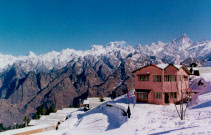 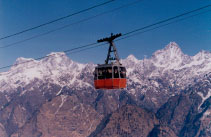 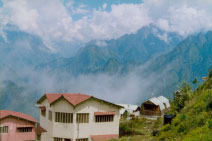 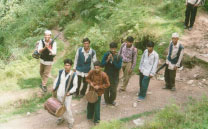 |
|||
|
After breakfast, Full day free at
Auli. Take cable car down to Jyoshimath, if desired. Or hike in
Himalayas. Dinner & overnight at hotel.
|
|||
|
After breakfast,
leave back for Rishikesh by surface. Reach Rishikesh and transfer
to hotel. Dinner & overnight at hotel. 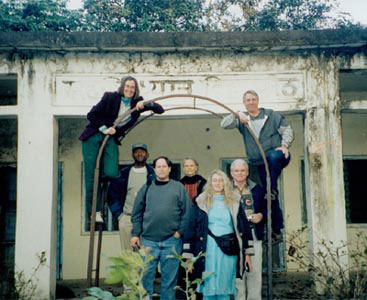  |
|||
|
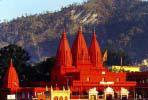 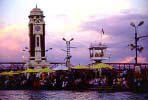 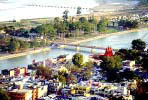 After breakfast,
leave back for Delhi. Reach Delhi and transfer to Village BISTRO
for Farewell Dinner and afterwards continue to IGI Airport and tour
terminates. |
|||
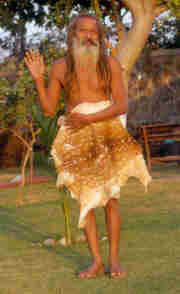
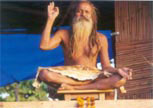

| CLICK HERE FOR INDIA TOUR FEES !!! |
| CLICK HERE TO INQUIRE OR REGISTER NOW ON OUR SECURE SERVER !!! |
| HIMALAYAN FOOTHILLS YOGA RETREAT IN NAINITAL |
| INDIA TRAVEL AND VISA INFORMATION |
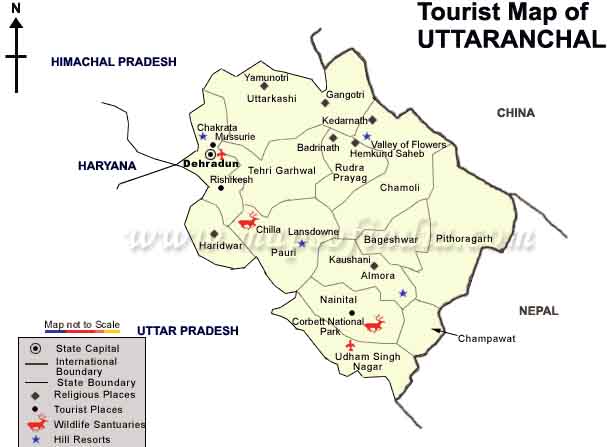
| TOUR HIGHLIGHTS |
| TOUR INCLUDES |
| TOUR DOES NOT INCLUDE |
| SIGHTSEEING |
Duration of a Half-day tour is 3 Hours. Full-day tours 5/6 Hours. The Guides on the tours are certified by the Government of India Tourist Department.
| CLICK HERE FOR INDIA TOUR FEES !!! |
| CLICK HERE TO INQUIRE OR REGISTER NOW ON OUR SECURE SERVER !!! |
| HIMALAYAN FOOTHILLS YOGA RETREAT IN NAINITAL |
| INDIA TRAVEL AND VISA INFORMATION |
CONTACT US: Divine Travels
818 SW 3rd Ave. #1505
Portland, OR 97204
CLICK HERE FOR INDIA TOUR FEES !!!
CLICK HERE TO INQUIRE OR REGISTER NOW ON OUR SECURE SERVER !!!
LINKS TO OTHER TOURS: DIVINE TRAVELS HOME
SPIRITUAL CRUISES
SPIRITUAL RETREATS
SACRED INDIA TOURS
SACRED EGYPT TOURS
SACRED PERU TOURS
SACRED BALI TOURS
SACRED GREECE TOURS
SACRED MEXICO TOURS
JOIN OUR MAILING LIST
DIVINE REVELATION HOME
DIVINE TRAVELS HOME
CLICK HERE FOR INDIA TOUR FEES
CLICK HERE NOW to Inquire or Register for an India Tour
IMPORTANT NOTE: Our Tours are not affiliated with any particular spiritual path. All are welcome!
SITE MAP DIVINE TRAVELS: HOME PAGE for Divine Travels | SPIRITUAL RETREATS IN USA | SACRED INDIA TOURS | SACRED EGYPT TOURS | SACRED PERU TOURS | SACRED BALI TOURS | SACRED GREECE TOURS | SACRED MEXICO TOURS | SPIRITUAL CRUISES | Join Our Travel Mailing List | |
CLICK HERE NOW to Inquire or Register for an India Tour